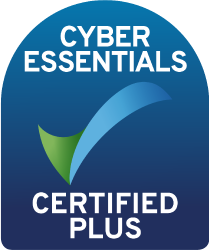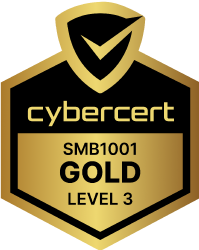A WiFi landing page is a fantastic asset that businesses can utilise to maximise their customer engagement, gather marketing information and increase revenue.
Connectivity is playing a more important part in everyday life—from hotels and events to restaurants and retail, not providing a guest connection can be mean missing out on lost business and leads.
What is a WiFi Landing Page?
A WiFi landing page is a webpage that is displayed on devices that connect to your WiFi network. These pages usually display a login feature, so that visitors have to input their email or personal data to gain access to the WiFi.
WiFi landing pages are most commonly used in hotels, events or hospitality businesses where customers need connectivity for a short period of time.

If you’ve ever been to a hotel, chances are you’ve seen and used a landing page.
Most WiFi landing pages provide users with at least one, if not several of the below:
- A login area to input data such as an email address in order to gain access to the WiFi
- A payment gateway, where users can pay for access to the WiFi
- Redirect to a webpage with specific product information on to upsell products to those connected to the WiFi
- Marketing information and offers as a way of upselling goods or services

Tips to Build the Best WiFi Landing Page
1. Keep it clean
Tip number one, and the most important of all, is to keep the page clean, clear and concise. Make it obvious where users need to input their data, and what options are available to them for signing in—such as ‘Sign in with Facebook’ or ‘Sign in with Apple’.

Avoid lots of clutter, and high contrast images to distract from the user experience. Light shadow, outlines and shading can help direct the user’s eye without detracting from the page content.
2. Use minimal form fields
We understand that WiFi landing pages are often about gathering as much data as possible, but don’t go ‘all in’. Only choose to collect the email addresses you actually need—such as an email address and a name. According to a poll by SurveyMonkey, 45% users will spend 5 minutes (at most) on filling out online forms and surveys. This is worth considering when you’re selecting how much data you want to gather from your WiFi landing page.
3. Mobile-ready design is important
Chances are, if you’re using a WiFi landing page, you’ve got a network where you want guests to have internet access. In most instances, most of these guests will be primarily using their mobile phone as their primary internet browsing device.

As such, it is essential to design your WiFi landing page to be mobile ready. Having your landing page display correctly, with appropriate sizing and touch space (so people who might struggle to use a touch screen can still press on buttons) is vital. A study by EnterpriseAppsToday shows that a 90% of web browsers prefer a web page that is mobile friendly—a statistic that shouldn’t be ignored by WiFi landing page design.
4. Present useful information
A lot of WiFi landing pages don’t even collect user data, but instead promote loyalty rewards of offers to the user when they join the WiFi. This is a great way to drive promotions, and offer users something meaningful when they access your WiFi network.
Most commonly, this is seen in shopping malls and the retail sector—where the mall can sell WiFi landing page space to shops in the mall in order to generate revenue and increase their shop’s marketing to the public.
If you’re choosing to present a WiFi user with information, such as an offer or discount, consider the text, images and offer itself. Make it relevant to those that might be logging onto the WiFi. A WiFI landing page with more relevant content will increase conversions.
5. Integrate physical marketing with your landing page
A great way to drive engagement, sign ups and WiFi landing page conversions is to integrate your physical marketing. A great example of this, is to position QR codes around your premises, that users can scan with their phone and login to the WiFi.

Since COVID, the QR code rebirth has occurred, you see them everywhere. Why not utilise a QR code and some marketing signage to promote your public WiFi network, drive engagement, or even offer a discount for those that choose to hand over their email address or data.

Benefits of a Good WiFi Landing Page
There are so many benefits to having a good, well designed WiFi landing page. From driving reviews, to generating revenue and increasing footfall.
Increased positive reviews
A huge benefit for hotels is increased positive reviews. Many hotels use their WiFi landing page as a prompt for users to leave a review on a platform such as TripAdvisor, Google or TrustPilot.
Using your WiFi landing page in this way helps improve your overall score, especially if you’re offering a good and reliable free WiFi network to guests. Datumize reports that 65% of guests access WiFi within 7 minutes of checking in—why not utilise this traffic and boost your hotel’s reviews.
Generate additional revenue
Many businesses see WiFi as an additional cost—without seeing the potential to use it to generate additional income. Lots of businesses in the retail sector utilise their WiFi landing page to generate additional revenue.

A great way to generate this additional revenue is to offer users a special discount when they sign up with their email address on your store WiFi, or perhaps setup a promotional code to be emailed to the user when they enter their data into your WiFi landing page.
A study by Invesp suggests that over 70% of users claim discounts have the biggest effect on purchase decisions.

Who Might use a WiFi Landing Page?
Lots of businesses across many different sectors use WiFi landing pages—but there are a few specific types of business that use them more frequently…
Hospitality & Hotels
By far the most common use of a WiFi landing page is in a hotel or hospitality venue such as a conference centre. These businesses have thousands of guests come through their doors each year, and they often all require a WiFi connection of some kind.
We’ve all been to a hotel that offers free WiFi, and you’ll frequently need to put your email address in to gain access to this free WiFi.
Utilising a landing page on their WiFi network allows a hotel to gather marketing data. Hotels often take advantage of this by asking guests to leave positive reviews, encourage them to share their photos or even rebook the hotel.
Events
As experts in event WiFi, we’re often asked about landing pages for guests attending large events and festivals. Most of these events are in a field, with limited 4G signal—especially when the field gets filled with guests.
With thousands in attendance, these events often like to generate additional revenue using WiFi landing pages and offering WiFi packages to guests. Many festivals choose to charge guests a set daily fee for access to the WiFi network, as a way of generating revenue and providing guests with an extra amenity.
Other events frequently opt for a WiFi landing page that gathers information such as email addresses that they can sell to vendors and traders attending the event.
At events where bandwidth is limited, then they often issue vendors and traders with a ‘WiFi voucher’ that they can use on the WiFi landing page to connect a certain number of devices for a certain length of time. This prevents password sharing and helps reduce the load on the bandwidth.
Restaurants/Cafés
Another prime example of WiFi landing pages often comes from Cafés and restaurants. Similarly to hotels, restaurants and Cafes have high footfall, and often attract business customers wanting to use any WiFI available to boost productivity.
By offering their customers a WiFI Landing page, restaurants and Cafes can help drive loyalty and repeat business—in return for offering a free amenity.
Many of our restaurant and Cafe clients use a landing page to offer rewards and loyalty bonuses in return for their customer’s email address information. Gathering marketing data and increasing the number of returning customers.
Sports Venue
Many sports venues across the UK utilise a WiFi landing page to gather attendees information, such as email addresses, names, favourite teams etc. They can use this marketing data to build a picture of the attendees, and upsell future tickets, mercy and more.
Often, large sports venues and arenas fill up quickly, and 4G/5G can quickly start to slow down with so many people on the network at the same time. That’s why many people who attend these sporting events log into the available WiFi network.
WiFi landing pages have many great uses—from gathering marketing data to monitoring those connected. WiFi is often the first thought of guests when it comes to hotels, restaurants or venue, and offering a reliable WiFi solution ensures they’re getting the best experience possible.






